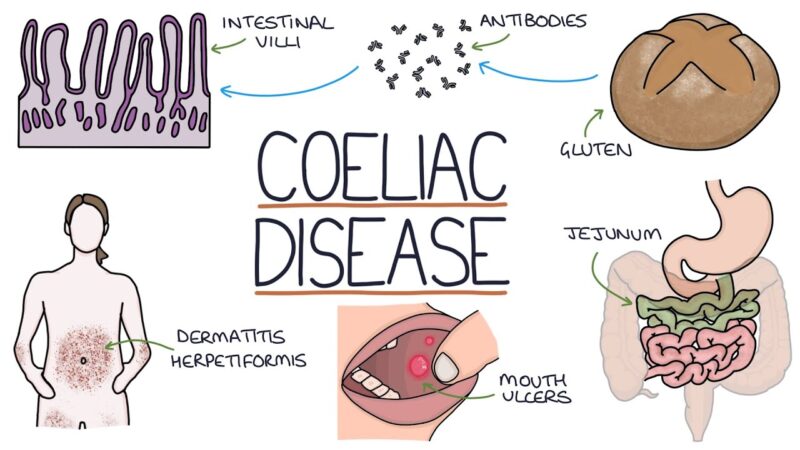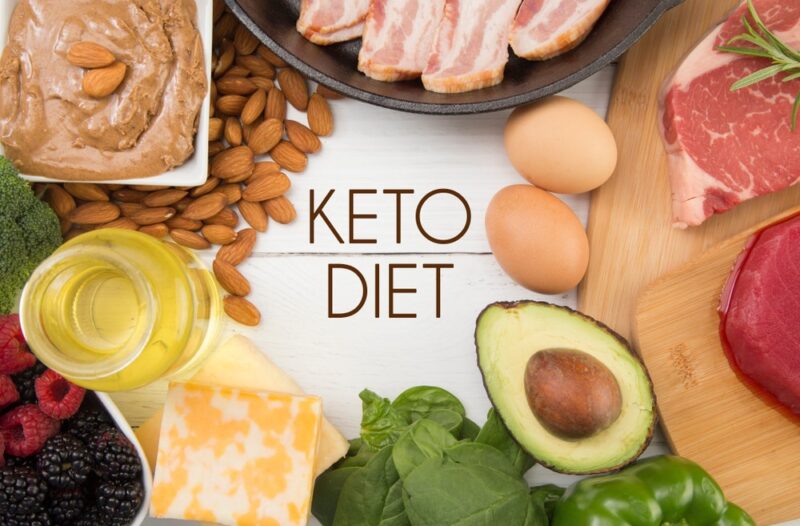Living with Celiac Disease can present numerous challenges, especially when it comes to finding a diet that suits your specific needs. However, a growing body of evidence suggests that adopting a ketogenic (keto) diet may offer potential benefits for individuals with Celiac Disease.
In this article, we will explore the basics of the keto diet and its potential role in managing Celiac Disease symptoms. Additionally, we will provide some delicious food options and even a shopping list to help you get started on your keto journey.
Understanding Celiac Disease:

Celiac Disease is an autoimmune condition triggered by the consumption of gluten. It affects the small intestine and can lead to various symptoms such as digestive issues, fatigue, nutrient deficiencies, and more. The primary treatment for Celiac Disease is following a strict gluten-free diet to avoid triggering symptoms and promoting gut healing.
The Keto Diet: An Overview:
The keto diet is a low-carbohydrate, high-fat diet that aims to switch the body’s primary fuel source from carbohydrates to fats. By significantly reducing carbohydrate intake and increasing fat consumption, the body enters a state of ketosis, where it relies on ketones as an alternative energy source.
Benefits of the Keto Diet for Celiac Disease:

One of the significant advantages of the keto diet for individuals with Celiac Disease is that it naturally eliminates gluten from the diet. By focusing on whole foods such as meat, fish, eggs, nuts, seeds, and non-starchy vegetables, individuals can maintain a gluten-free lifestyle while following the keto principles.
Additionally, the keto diet has been shown to reduce inflammation in the body, potentially alleviating symptoms associated with Celiac Disease.
Implementing the Keto Diet for Celiac Disease:
Before starting any new diet, it is essential to consult with a healthcare professional or registered dietitian. They can provide personalized guidance and ensure the keto diet aligns with your specific needs and health goals.
When adopting the keto diet for Celiac Disease, it is crucial to source gluten-free ingredients and be mindful of cross-contamination risks. Choosing high-quality, nutrient-dense foods will support overall health and well-being.
Creating a Keto-Friendly Shopping List:

To help you get started on your keto journey, here’s a list of typical keto foods that you should be incorporating into your diet:
- Protein: Include sources like grass-fed meat, poultry, fish, and seafood. These provide essential amino acids and healthy fats.
- Healthy Fats: Opt for avocados, olive oil, coconut oil, and nuts and seeds. These fats support satiety and provide important nutrients.
- Non-Starchy Vegetables: Stock up on leafy greens, broccoli, cauliflower, zucchini, and bell peppers. These are low in carbs and high in fiber, vitamins, and minerals.
- Dairy and Dairy Alternatives: Choose full-fat options like Greek yogurt, cheese, and unsweetened almond milk or coconut milk. They provide calcium and healthy fats.
- Eggs: Incorporate eggs into your meals for a versatile source of protein and healthy fats. They are rich in vitamins and minerals.
- Low-Carb Fruits: Enjoy berries, such as strawberries, blueberries, and raspberries, in moderation. These fruits are lower in carbohydrates compared to other fruits.
- Condiments and Flavorings: Look for sugar-free options like herbs, spices, vinegar, and mustard. They add flavor without adding carbs.
- Snacks: Keep keto-friendly snacks on hand, such as beef jerky, olives, and pork rinds. These provide protein and healthy fats.
- Drinks: Hydrate with water, unsweetened tea, or coffee. Consider sugar-free electrolyte drinks for replenishment.
Most grocery stores are going to have almost everything you need to start your keto diet, but I highly recommend shopping at Costco. Costco offers a wide selection of keto friendly food items and at amazing prices. Check out a 200 item Costco keto foods shopping list to help get you started. Remember, Expensive diets are harder to stick to than more affordable diets!
Balancing Nutritional Needs

While the keto diet offers potential benefits for managing Celiac Disease, it is crucial to ensure a well-rounded approach to nutrition. It is recommended to incorporate a variety of nutrient-dense, gluten-free foods such as leafy greens, avocados, olive oil, and fatty fish into your meals.
Regular monitoring of nutrient levels, especially vitamins and minerals, can help address any potential deficiencies that may arise from specific dietary restrictions.
Conclusion:
The keto diet shows promise in managing Celiac Disease symptoms while maintaining a gluten-free lifestyle. By eliminating gluten and focusing on low-carbohydrate, high-fat foods, individuals with Celiac Disease can potentially experience reduced inflammation and improved overall well-being.
However, it is important to consult with a healthcare professional or registered dietitian to ensure the keto diet aligns with your specific needs and to address any potential concerns.

